Ecological university building by BDG Architects features a circular plan
The cylindrical shape of this university building on the outskirts of Dutch town Wageningen is designed by BDG Architects to optimise the usable floor space inside and reduce energy loss through the facade (+ slideshow).

Stoas Vilentum is the only institution in The Netherlands dedicated to teaching agriculture and ecology, and the Zwolle office of Dutch firm BDG Architects wanted to reflect its sustainable focus through the building's shape, materials and interior details.
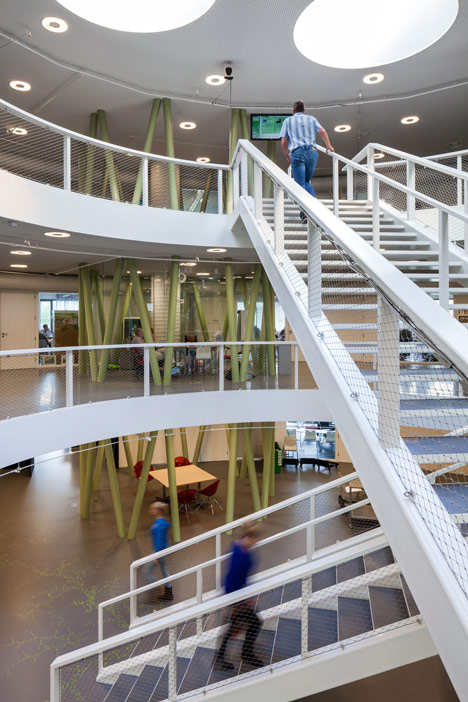
"For the basis of the building [we] chose a cylindrical shape because of the favourable ratio of surface area relative to the area of the facade," said the architects, adding: "This minimises energy loss through the building’s skin."
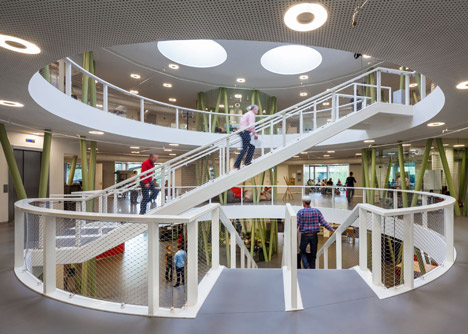
Located on a site surrounded by grass and trees, the building is slightly raised to make the most of its position in the landscaped campus.
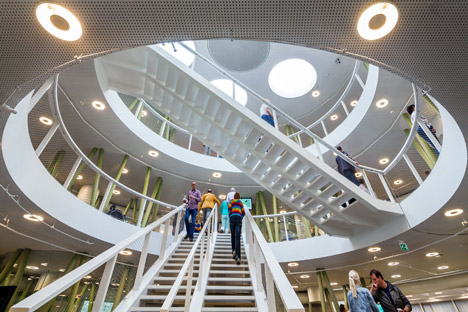
"The interaction between architecture and landscape is intensified by placing the building on a green mound," the architects explained. "The campus will develop in the future more into a surrounding where education, working and living come together."
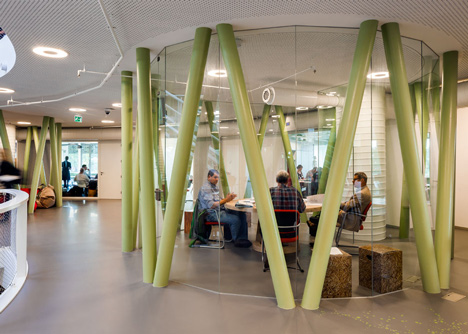
Balconies wrap around sections of the facade and transition into long staircases that connect the building's three storeys.
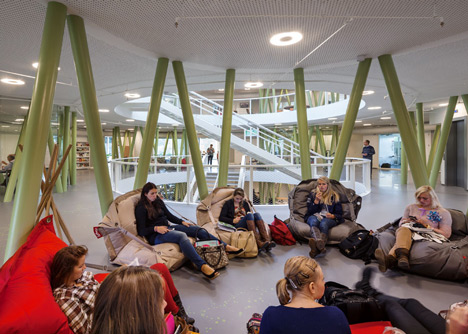
A staircase ascends through the circular atrium at the centre of the building, which is filled with natural light from large round skylights.
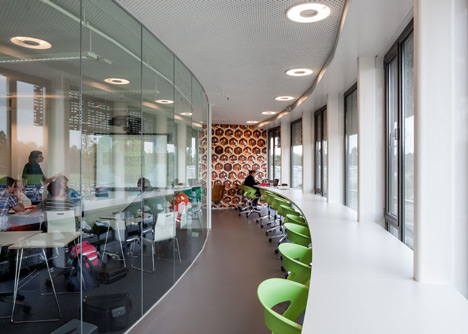
The architects planned the interior spaces to accommodate the university's flexible learning practices, with labs, offices and classrooms located around the circumference of the building, and spaces for informal activities in the open areas at the centre.
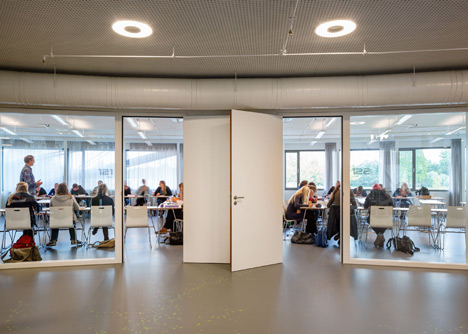
Angled green columns punctuate the communal spaces around the edge of the stairwell on each floor, in some places surrounding glass-walled cylindrical meeting rooms.
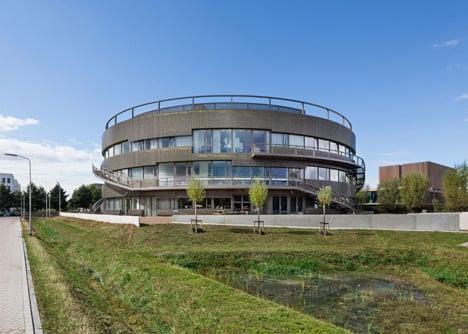
Students and staff can also congregate on giant beanbags clustered throughout the atrium to conduct impromptu meetings or relax during free time.
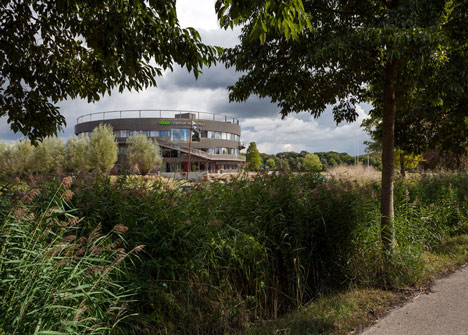
Swivel desk chairs lining long curving work surfaces provide an alternative place to study with views across the surrounding campus.
Photography is by Scagliola Brakkee.
Here's some more information from the architects:
STOAS VILENTUM HOGESCHOOL - WAGENINGEN
Stoas Vilentum is a small academic institution where research and teaching focus on the green sector, and where educational specialists in the fields of agriculture and ecology are trained.
The educational philosophy of the institution is based on 'ecological intelligence'. The design of BDG Architects is a translation of this philosophy and is conceived in close cooperation with the future users.
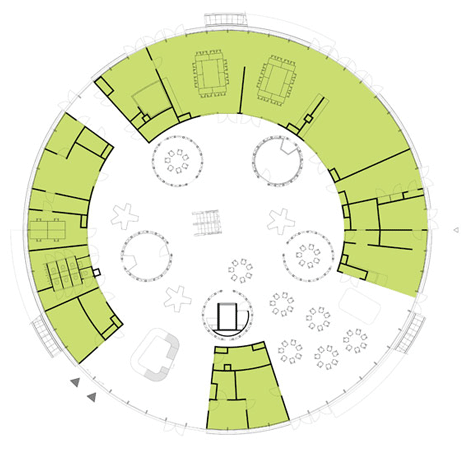
Green mound
The building is designed as a pavilion in the green surroundings of the campus. The interaction between architecture and landscape is intensified by placing the building on a green mound. The campus will develop in the future more into a surrounding were education, working and living come together. The new building for the Stoas Vilentum is an important step in this development, which is emphasized by placing the building on this mound.
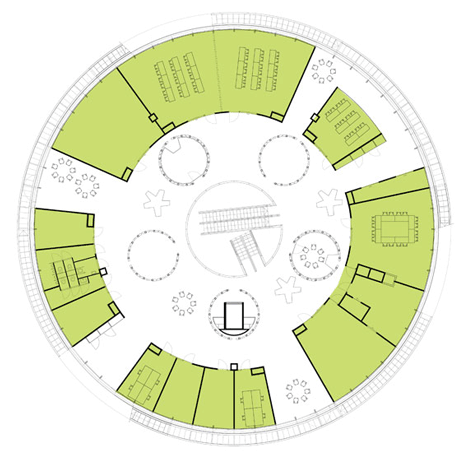
Study landscape
The three floors of the building are linked to each other by a central atrium in which lazy stairs connects the different floors. The balance between open learning areas, intimate study places and classrooms is designed to serve the educational philosophy of the university optimal. The spaces are divides into the so called 'nesting areas'- rational spaces with established functions such as labs, offices and classrooms -, and 'cave areas'- open spaces where different (spontaneous) activities can take place.
Beautiful prints on the walls make these areas recognisable. On different places in the building are ecological structures used, for example on these prints, which refer to the education that is given in which the relation between humans and nature and ecology is placed central.
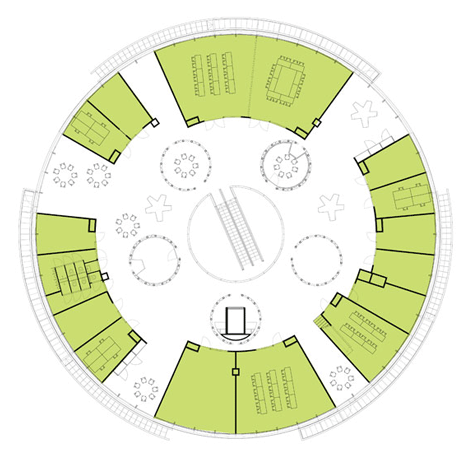
Equivalence
For the basis of the building BDG Architects choose a cylindrical shape, because of the favourable ratio of surface area relative to the area of the façade. This minimises energy loss through the building’s skin. The cylindrical shape also represents the equivalence between tutors and students. The clear shape makes it into a firm and attractive building, well placed in its surroundings and with an pleasant interior for the students and tutors.
Architect: BDG Architects Zwolle
Name project: Stoas Vilentum Wageningen
Address: Mansholtlaan 18, 6708 PA Wageningen, the Netherlands